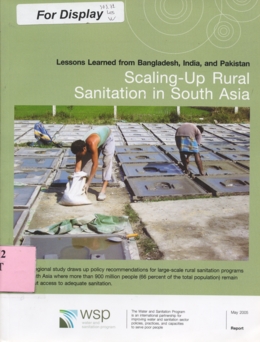 In South Asia, more than 900 million people (66% of the total population) remain without access to adequate sanitation. Despite significant investments, rural sanitation caoverage in the region is barely keeping pace with population growth. Clearly, current approaches to the development and provision of rural sanitation services in the region are either not effective, or are not at suffficient scale to make an impact on the enormous population that lacks adequate sanitation. In South Asia, more than 900 million people (66% of the total population) remain without access to adequate sanitation. Despite significant investments, rural sanitation caoverage in the region is barely keeping pace with population growth. Clearly, current approaches to the development and provision of rural sanitation services in the region are either not effective, or are not at suffficient scale to make an impact on the enormous population that lacks adequate sanitation.
This regioanl study was commissioned by the water and sanitation Program South Asia (WSP - AS) to adress some of these issues. The main objectives of the study were: to develop case studies of innovative approaches to rural sanitation in Sputh Asia; To analyse the factor of success (and constraints) found in these case studies; To aseess potential strategies (and constraints) to scalin gup the approaches used in case studies; and To draw up policy recommendations for large - scale rural sanitation programs in the region.
Post Date : 09 September 2006
|
 In South Asia, more than 900 million people (66% of the total population) remain without access to adequate sanitation. Despite significant investments, rural sanitation caoverage in the region is barely keeping pace with population growth. Clearly, current approaches to the development and provision of rural sanitation services in the region are either not effective, or are not at suffficient scale to make an impact on the enormous population that lacks adequate sanitation.
In South Asia, more than 900 million people (66% of the total population) remain without access to adequate sanitation. Despite significant investments, rural sanitation caoverage in the region is barely keeping pace with population growth. Clearly, current approaches to the development and provision of rural sanitation services in the region are either not effective, or are not at suffficient scale to make an impact on the enormous population that lacks adequate sanitation.